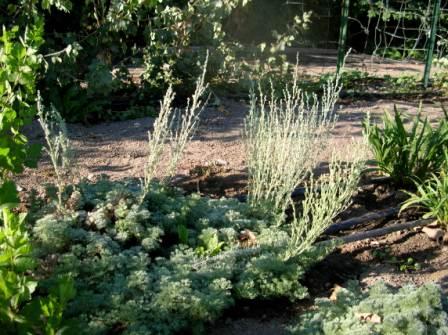U.S. Forest Service Fire Information System

Laura Smith Westscape Nursery, Bozeman, Montana. Photo credit: Diane Jones, Draggin
Scientfic Name: Artemisia frigidaCommon Name: Fringed Sagebrush
Description: Artemisia frigida is an evergreen Subshrub growing 1-2'. Velvety fine textured foliage which produce flowering spikes which are often cut for making ornamental wreaths. The aromatic, soft texture lends this sage to landscapes. Spreads moderately by rhizomes.
Native Habitat: Fringed Sagebrush is found growing on dry, well drained slopes ranging from foothills to higher elevations. This shrub tolerates a wide range of soil types and moisture regimes. It is often associated with forbs and low growing grasses.
Cultural Requirement
Soil: Range from coarse to fine textures and pH ranges neutral to alkaline. Does not tolerate clay soils. Tolerates some salinity.
Moisture Tolerance: Range from annual precipitation of 8"-40".
Sun/Shade/Preference: Requires full sun and has very low shade tolerance. Requires full sun for seed establishment.
Transplanting: Is relatively easy during the spring and summer from containerized material and bare root (spring only). Avoid winter and late spring transplanting.
Propagation: Easiest by seed.
Maintenance (pruning, fertilization, deadheading, division, irrigation, etc): Fringed Sagebrush can be pruned and tends to regrow lusher. Tolerates low fertilization. Can be susceptible to Powdery Mildew and Fusarium root rot.
Insect, disease, or other problems: Watch for aphids in early spring.
Landscape Value
Foliage: Soft, velvety green/blue foliage.
Flower: Inconspicuous flowers.
Timing: Apr May June July Aug Sept Oct
Form: Spikes, often used for making wreaths.
Ultimate Size: 1-2' depending on conditions.
Rate of Growth: Medium to fast dependent on moisture and temperature.
Suggested Plant Partners: Low growing bunch grasses and perennials.
Availability: Good in native and specialty nurseries.
References:
Munshower, F.F. 1995. Forbs, shrubs, and trees for revegetation of disturbed lands in the northern Great Plains and adjacent areas. Montana State University, Reclamation Research Unit Publ. No. 9505
Rose, R, C.E.C. Chachulski, and D.L. Haase. 1998. Propagation of Pacific Northwest native plants. Oregon State University Press. ISBN 0-87071-428-7
USDA Plant Database

